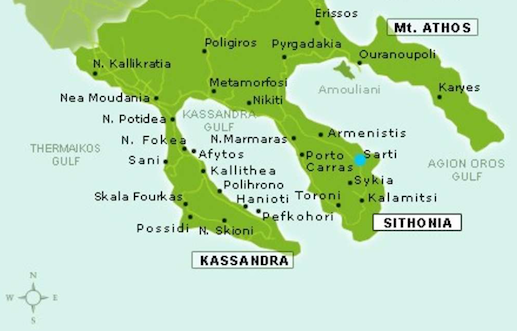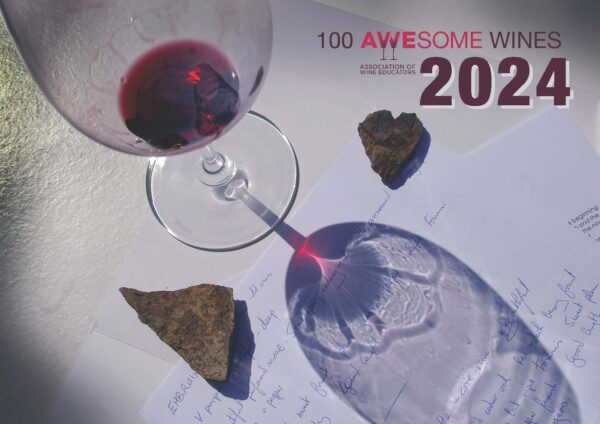A ‘new era’ for Greece: The captivating vineyards of the PDO Slopes of Meliton and PGI Sithonia
After many years of teaching people about the joys of Greek wines, I finally set foot in a Greek vineyard last week. Our visit, sponsored by the European Union, was to Halkidiki – the three-pronged peninsula on the coast of mainland Greece, south of Macedonia and northeast of the Peloponnese.
The region is home to the PDO of the Slopes of Meliton and the PGI area of Sithonia both on the Sithonia peninsula.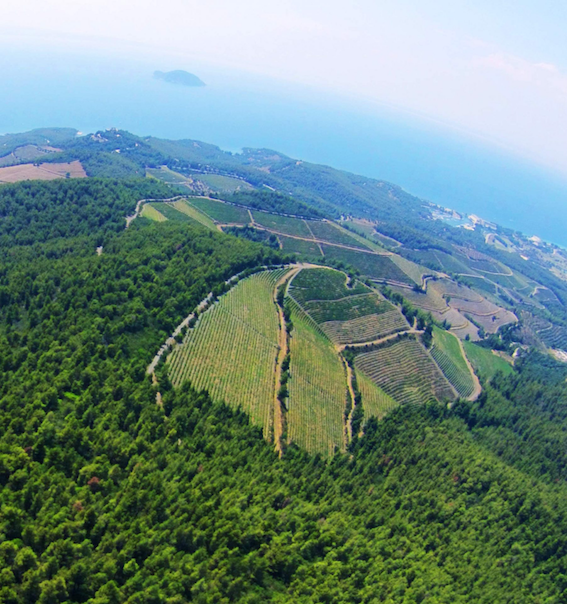
While the appellation dates from 1982, wine making here goes back to the establishment of Greece’s first “Domaine“ or estate, in the early 1960s when Porto Carras started planting on the slopes of Meliton half way down the peninsula. Both olives and vineyards were planted, scattered around slopes between 100 and 350 metres with different orientations.
At the time, Professor Emile Peynaud from Bordeaux was recruited to oversee the project. Porto Carras now has the largest single organic vineyard in Greece.
As you drive down through Sithonia, the landscape becomes more and more dominated by folds of rocks and less obviously verdant. By the time you leave the main road to the Porto Carras winery, the terrain becomes more like a forest. Reaching the vineyards requires a drive up and out of the shady spot where the winery sits. Stepping out into the bright sunshine, half way up the slopes, you’re surrounded by several plots of vines and forested areas – and a blast of heat! But up here there’s a breeze coming off the Aegean reminding you of how and why this combination of altitude and exposure works.
and less obviously verdant. By the time you leave the main road to the Porto Carras winery, the terrain becomes more like a forest. Reaching the vineyards requires a drive up and out of the shady spot where the winery sits. Stepping out into the bright sunshine, half way up the slopes, you’re surrounded by several plots of vines and forested areas – and a blast of heat! But up here there’s a breeze coming off the Aegean reminding you of how and why this combination of altitude and exposure works.
The climate here is moderately Mediterranean, with cool winters, most of the rain in spring and dry, hot summers cooled by the offshore breezes.
The top two white varietals here are Assyrtiko and Malagousia. A walk in the vineyards with the estate’s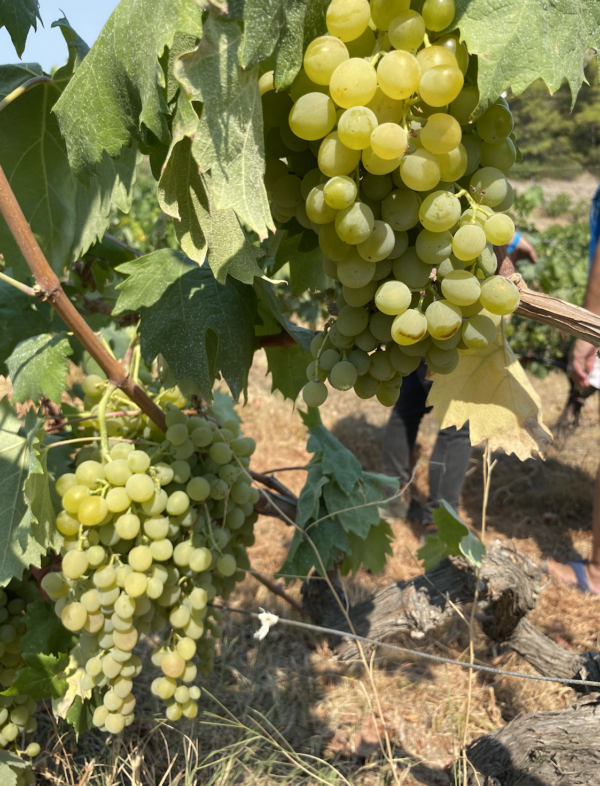 Chief Agronomist, Doctor Harula Spinthiropoulou was really informative. First up we tasted some of the Assyrtiko grapes.
Chief Agronomist, Doctor Harula Spinthiropoulou was really informative. First up we tasted some of the Assyrtiko grapes.
These are the oldest Assyrtiko vines on the mainland outside Santorini at an average age of 50 years. Assyrtiko here is called “Assyrtiko Mainland “.
Of course it’s different – yields are higher than Santorini and the training system more conventional, but the wines are utterly delicious. Assyrtiko’s small berries and high ratio of skin to pulp produce intensely flavoured wines, helped by the vines’ age. The wines are concentrated with high, but ripe and balanced acidity and a more fleshy texture. There’s a ripe lemon peel note on the nose and palate with a rocky rather than smoky volcanic minerality on the finish.
The soil in this vineyard has veins of quartz through it – breaking up the rock and allowing the vines’ roots to penetrate more deeply, making them more resistant to drought. Smaller pieces of quartz glinting in the sunlight caught my eye as we walked the vineyards.
Further down the slopes we came to the Malagousia vines – identifiable to the trained eye with its bigger berries. Sampling both varieties side by side, the juicy, fleshy character of the Malagousia really stood out. It’s an ancient variety that had fallen out of favour because of its tendency to mildew. Research at Port Carras by Peynaud and his then student Gerovassiliou, identified it. Work to propagate it began in earnest and the variety was saved from extinction. Porto Carras has the oldest Malagousia in Greece – with an average vine age of 50 years.
The wine has a beguiling nose – a distinctive mix of exotic fruit, white flowers and sweet herbs, while on the palate there’s a spiciness and texture very reminiscent of Viognier. It is now widely grown in Sithonia making up 60% of the white varieties in PGI Sithonia.
If the white wines focus on the indigenous varieties of Assyrtiko and Malagousia with a supporting cast of Athiri and Roditis in blends, the reds in general remain based on more international varieties, notably Cabernet Sauvignon, Cabernet Franc and Syrah. All thrive in this climate while retaining lovely freshness. However, the local Limnio grape is fast making a name for itself.
Limnio is one of the oldest Greek grapes – reputedly cited by Aristotle and Hesiod and is native to the island of Limnos. Within the PDO Meliton Slopes 70% of Limnio must be blended with 30% of Cabernet Sauvignon and /or Cabernet Franc.
The residing winery, Porto Carras, makes a lovely pure Limnio Red 2019 PGI Sithonia. This is a perfumed,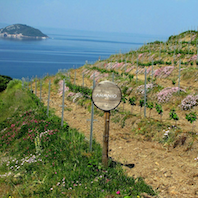 fresh and lifted red, relatively light in body and with gentle tannins – very enjoyable in a warm climate. It was clear to me that Limnio has a lot of potential in this region.
fresh and lifted red, relatively light in body and with gentle tannins – very enjoyable in a warm climate. It was clear to me that Limnio has a lot of potential in this region.
Historically Domaine Porto Carras planted the two Cabernets and Syrah and we had the good fortune to be allowed to try the 2009 Syrah PGI Sithonia
While I would be the first to admit to a preference for the indigenous over the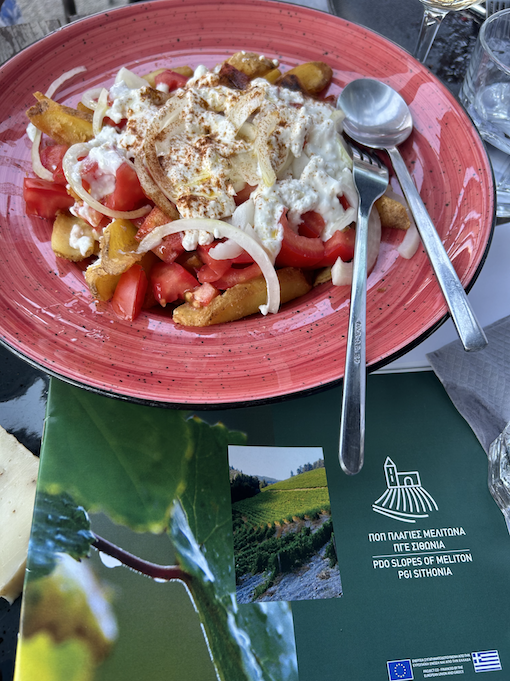 international, I just loved this. It was very much like drinking a Northern Rhone Syrah from a warm year – ripe blackberries and raspberries, lots of black pepper, well integrated wood at this stage and a core of acidity keeping it all together. It was clearly evolved, but not to the detriment of the fruit and not I felt, about to fall apart anytime soon.
international, I just loved this. It was very much like drinking a Northern Rhone Syrah from a warm year – ripe blackberries and raspberries, lots of black pepper, well integrated wood at this stage and a core of acidity keeping it all together. It was clearly evolved, but not to the detriment of the fruit and not I felt, about to fall apart anytime soon.
Moving to the Future – the “new era”
Domaine Porto Carras is Greece’s first “Chateau” and was one of the first to market its wines successfully outside Greece. Now there is a critical mass of impressive estates and well-regarded winemakers throughout the country – most of them focused on their local, stellar grape – Xinomavro in Naoussa, Agiorgitiko and Moschofilero in the Peleponnese, Assyrtiko on Santorini.
Beyond this huge development within Greece, the world is now ready to embrace the different and distinctive varieties from countries whose wines they would never have considered trying in the past.
In the 1980s many Greeks themselves believed the international varieties were more prestigious and better quality than their own grapes – some preferring to drink Pinot Noir rather than Xinomavro. These days Greece’s indigenous varieties are enjoying a long overdue comeback, both at home and abroad, just as winemaking techniques and vineyard management are focused on the best expression of those grapes.
There’s a sense of anticipation and a firm focus on the future in this oldest of Greece’s estates. Its past was ground breaking in its day – I think its future may well prove to be so once again.
Tags: PDO Slopes of Meliton PGI Sithonia Domaine Porto Carras Limnios
